Testimonials
Intro
My wife Carrie and I have just come back from a terrific 11-day trip to Sri Lanka. Principally chosen as a place to combine food, shopping and wildlife watching with some birding, Sri Lanka is special for the good numbers of endemic species and races that compose some 20% of its total avifauna. While opinions vary, the field guide we used (Warakagoda & the Grimskipps Birds of Sri Lanka, Helm 2014) acknowledges 28 endemic species and 69 distinctive races. I’ll mark the first reference to each of these with a large (E) or little (e) respectively.
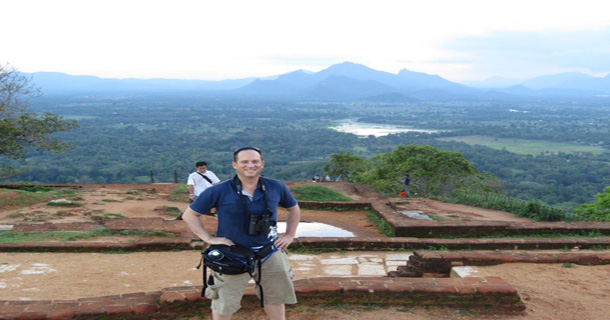
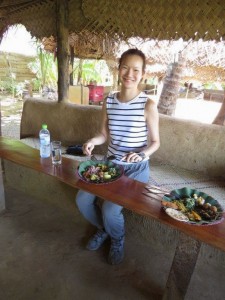
I should stress that this was not principally a birding trip so I went with every expectation of missing out on a few of the endemics, but hoping to connect with several key target species. As I had previously visited and done well in the endemic-rich Sinharaja Rainforest back in 2000 and have seen most of the palearctic migrants in Hong Kong, China and elsewhere in the region, my principal targets were the subcontinental migrants (especially Pied Thrush, Indian Pitta and Kashmir Flycatcher), the dry country endemics, plus night birds and a few outstanding tart’s ticks. Over and above all of these our top target for the trip was to see Leopard. Yala National Park in the arid zone on the southeast coast has the greatest density of this mega-mammal of anywhere on the planet . . .
26 October
After a late night arrival on 26th we spent the night at the Tamarind Tree Hotel ten minutes the airport. The next morning an hour’s stroll round the leafy grounds kicked off with a Large-billed Crow trying to drink from a garden tap followed by a fine succession of common garden birds. These started with three or four Yellow-billed Babblers – the scruffy grey-brown urchins of the subcontinental bird world – grotting around on the path, an astonishingly bright yellow Black-hooded Oriole, several flyover Rose-ringed Parakeets, a gang of ten Red-fronted Barbets (E), several Spotted Doves (e) of the handsome buff-fringed race ceylonensis, in the top of a tree close to Reception that also held a White-bellied Drongo (E), a cristatus Brown Shrike, Oriental White-eye, an elegant pair of Small Minivets and more Red-vented Bulbuls and Common Mynas than you can shake a stick at.
After meeting our guide Hetti from Jetwing Eco Holidays we got on the road for Sigiriya – some 3-4 hours to the northeast. On the way new birds included Cattle and Great Egrets and Black-headed Ibis and a few White-throated Kingfishers, but we started scoring again as we checked in to the wonderful Vil Uyana Hotel – an award-winning hotel that transformed a tract of abandoned farmland into a constructed wetland with a range of luxury villas in different habitats. More of the hotel anon, as soon after checking in we drove the short distance to Sigiriya the sometime monastery, sometime fortress on a giant monolith sanding proud from the otherwise flat central plains.
We opened our account here with a Common Kingfisher and hearing Thick-billed Flowerpecker, Green Warbler and Large-billed Leaf Warbler, both of which had arrived to winter from much further north, and a Brown-headed Barbet swooped across a clearing.
One of the highlights of Sigirya was the troupe of Toque Macaques. I am no fan of this often troublesome and sometimes downright dangerous family of monkeys, so I was delighted to discover that along with a fine range of extremely dubious hairstyles they were not at all aggressive and were no trouble at all to any visitors- in stark contrast to macaques in many other places in Asia.
As we climbed the rock a gang of House Swifts flew around the rock and whilst recovering my breath and stopping my knees knocking following the vertiginous climb a Shahin Peregrine Falcon called and zipped round the rock face and out of sight. Our evening walk with the in-house naturalist for Grey Loris delivered a young animal that gave a few brief views in the spotlight.
27 October
When you wake up in your luxury two-storey private villa, look out the window and see a pile of turd by the pool two days in a row and feel intrigued and honoured – then you know you somewhere special. Vil Ulyana is a bit different in that respect – an award-winning eco-lodge built on abandoned slash and burn farmland just a few miles away from the world heritage site at Sigriya.The site plays host to both Eurasian Otter and Fishing Cat – two animals that many people would love to see. Hetti thought day 1’s offering was probably left by the latter, while the hotel’s resident naturalist thought that day 2’s pile was from an otter. Any comments on the ID would be most welcome. In the end we saw neither, but did see several duty brown Land Monitors, the substantially larger and more colourful – green-spotted black Water Monitor, several trees-full of the impressively large Flying Foxes and a Ruddy Mongoose. The birds were also pretty good. In addition to picking up my first ever Indian Pitta found by Hetti perched calmly on a palm frond in the garden across the road from the front gate I also enjoyed crippling views of Grey-headed Fish Eagle, which apparently visits the pond in front of the restaurant most mornings.As our room looked out over another pond a Little Cormorant drying its wings provided a fine foreground view, while six or eight Indian Pond Herons and a couple ofWhite-breasted Waterhens patrolled the pond edges and the lily pads and a superb adult Purple Heron lurked in the background. A dozen Lesser Treeducks flying over giving their unexpectedly sweet whistle and small groups of Cattle Egrets heading out to feed in the flooded fields plus a couple of Brahminy Kites added to the wetland feel of the general area.Closer to the ground four Orange-breasted Green Pigeons zoomed over, and a White-browed Bulbul lurked in the bushes along with a female Indian Peafowl and a handsome male Sri Lanka Junglefowl (E), complete with a yellow-centred comb, long green tail, and golden hackles. Both Pale-billed and Thick-billed Flowerpeckers, an Asian Paradise Flycatcher, and Purple-rumped and the much larger Loten’s Sunbirds and Oriental Magpie Robin shared the bund-side bushes with the first of many Layard’s Striped Squirrels. A Black-hooded Oriole – the hood contrasting sharply with the brightest yellow imaginable on the wings and body staked an early, and ultimately unchallenged, claim to being the brightest bird of the trip.
Fabulous indeed Gretchen – In retrospect the afternoon at Minneriya ranks as one of my best day’s birding ever – the sheer profusion,variety and proximity of large waterbirds in good light and beautiful habitat was an absolute delight – even without the elephants!
Very interested to hear about your hiking trip Stuart. Where will you be walking?
28 December
Next morning, Hetti and I went back to Sigiriya for a couple of hours birding. Even before we were out of the car a couple of Stork-billed Kingfishers had flown up from the edge of the moat, Indian Pitta called and showed even before we got out of the car! The good birding continued – we found a pair of nestbuilding Dark-fronted Babblers, an Alexandrine Parakeet visiting a nest hole, Tickell’s Blue and Asian Brown Flycatchers, a very showy Sri Lanka Green Pigeon (a split from Pompadour Pigeon), and heard a distantly calling Banded Bay Cuckoo.
It was also highly instructive to hear and see Large-billed, Greenish and (Bright) Green Warblers in the same place. While the former is obviously larger and easy to separate the latter two species look extremely similar, with Greenish giving a softer slurred call and Green a harsher sparrow-like disyllabic call that is reminiscent ofplumbeitarsus Greenish Warblers in Hong Kong. Finding a small Mugger Crocodile in the inner moat was a reminder that Sigiariya’s moat was indeed built for defense and filled with crocs to dissuade unwelcome visitors. The outer moat and nearby trees held a Grey Heron, Asian Paradise Flycatcher, a flover Crested Goshawk, Indian Robin and best of all, Hetti found a couple of handsome Black-headed Cuckooshrikes.
The drive up into the hills surrounding Kandy was relatively uneventful, although the road itself was lined with magnificent trees that in a country less endowed with natural richness that Sri Lanka would be considered a natural treasure.
Having checking into the Cinnamon Citadel Hotel, with its view of the river and forested banks we went for an abortive shopping trip that did however provide my first House Sparrow of the trip. This was more interesting than might be supposed as this species has narrowly failed to be added to the Hong Kong list as a genuine wild bird.
29 October
Waking at dawn I spent a couple of hours of “conference birding” – the term I give to the snatched opportunity to snap up whatever commonbirds can be seen from the hotel during worktrips overseas – on the balcony watching flocks of parakeets and egrets flying over, the last Flying Foxes return to their roosts and a gathering of 50-odd Large-billed Crows in the trees close to the hotel. Stork-billed andCommon Kingfishers and Red-wattled Lapwing appeared on the scrap of lawn by the river, whileHooded Oriole, Red-vented Bulbuls, a Greater Coucal, Brown-headed Barbet and a few other bits and pieces appeared in the trees above the stream at the edge of the property.Kandy Botanical Gardens are beautiful. Fabulous tress, magnificent lawns, perfect flowerbeds, all in immaculate order, and with very few visitors make a most genteel setting for a spot of birding. A couple of Large Cuckooshrikes high in an ancient acacia were apparently pretty rare here, while a trio of Layard’s Parakeets(E), smaller than the abundant Rose-ringed and a couple of Sri Lanka Hanging Parakeets (E) zipped around without offering anything more than flight views. I also enjoyed wonderful close views of Loten’s and Purple-rumped Sunbirds feeding at point blank range. An Indian Pitta lurking among the bamboos was so absurdly tame that as I sneaked in to photograph it, it came hopping towards me, stepped up onto a convenient perch and posed magnificently. Pittas and major target birds elsewhere take note: this is how it should be done!We were soon back on the road again – this time on the way to the tea-growing uplands around Nuwara Eliya (NE). A very pale Changeable (aka Crested) Hawk Eagle perched on a snag among some tea bushes was a rare good bird on the journey until we stopped at the Mackwoods Tea Factory-cum-Museum. Whilst enjoying a cup of (most definitely not “a cuppa”) what is bar none the best tea I have ever tasted Hetti picked up the call of Sri Lanka White Eyes (E) in what turned out to be a mixed flock with Oriental White Eyes in the garden. More interesting still were the Scaly-breasted Munias, which have much whiter underparts and a distinctive chestnut rump and tinge to the upperparts, making them look nothing like the chocolate-toned version of this species in Hong Kong.We watched a pair carrying lengths of grass more than three times the length of their bodies up into a fir tree in the middle of the car park where a nest was obviously taking shape.That afternoon, after checking into the hundred year old St Andrew’s Hotel, which had served as the Scottish Club in this 2,000m high hill station enclave, we headed off to Hakgala Park. This is a good site for a variety of endemics and winter visitors from the subcontinent, as well as the montane race of Purple-faced Leaf Monkey – otherwise known as Bear Monkeys. The problem was the weather – it had rained during lunchtime and continued raining as we drove the 20-odd minutes to the park. As we arrived the rain stopped and the fog rolled in. Hmmm – Nuwara Eliya providing unwelcome support for its Little England nickname.
Once again Hetti knew his business and we headed over to a corner where a flycatcher was calling – Kashmir Flycatcher! It continued to call for over 15 minutes without ever once offering to show and in the end we headed on, with nowt but a Grey Wagtail by way of compensation as the fog thickened. Just as the rain started again a movement at the top of a bare tree resolved itself as one of a group of several Bear Monkeys – coats, and especially the white beard and whiskers twice the thickness of its lowland cousins. This was our top target for NE, so it was nice to get it the bag, even though we would definitely be after better views the next day.The final pic is of a Sri Lanka Blue Magpie- one of two birds in the mist that were a rarity here in the high mountains – and our only sighting of the trip.
30 October
Our visit to the high plateau of Horton Plains required a 5:00am start to a journey that included a 20 minute wait for a train to move its engine from one end to the other and a 40 minute delay while a tree that had fallen in the night was removed from the road. The first delay was interesting – even for a non train buff – and the second was productive – a pair of Orange-billed Babblers (E) flew over the road, a female/imm Indian Blue Robin came in super close, but while Sri Lanka Bush Warbler (E) and Sri Lanka Woodpigeon (E) both called they remained stubbornly invisible.After driving up into the park we stopped at a small pool which failed to deliver Sri Lanka Whistling Thrush or views of a singing Spot-winged Thrush (E), which was not altogether surprising given our delayed arrival. We enjoyed fine compensation in the form of Yellow-eared Bulbul (E) and a fine pair of Dull Blue Flycatchers (E) that pished right in to check us out. As we moved out into the grassland a pale-bellied eagle that showed a line through eye the on a snag proved to be a Legge’s Hawk Eagle(E) – the endemic version of Mountain Hawk Eagle. Other birds up here included a pair of Pied Stonechat, several Zitting Cisticolas, eight Hill Swallows – a highly distinctive race of Pacific Swallow, half-a dozen Alpine Swifts – a bird I was surprised to discover is resident in Sri Lanka – and my only Black-throated Munia (E)of the trip.On the way back as we searched for a leopard that had been seen by other visitors. This was not altogether a surprise as we had heard a Sambar Deer giving an alarm call as we headed in, but were distracted by a couple of female Bear Monkeys and their babies sitting out on top of a tree in the early morning sunshine and did not linger to explore further. A wild Water Buffalo in a field was a good sighting up here in the mountains, and a herd of Friesian cows provided the necessary microhabitat for a flock of 100-odd Cattle Egrets.On the way back to town a Sri Lanka Crimson-backed Flameback (E) called and showed superbly well close to the road as we stopped near the railway crossing where we eventually enjoyed superb views of a flock of eight Sri Lanka Woodpigeons (E) coming up from drinking at a roadside stream. They were very approachable I and was delighted to get some decent shots of this rather small, neat woodpigeon, with a beautiful cloudy pink wash on the head, neck and underparts and slate-grey wings, rump and tail. Roadside raptors included a Himalayan Buzzard, White-bellied and Crested Hawk Eagles and a Besra.
In the afternoon we headed back to Hakgala Park. The weather was a great deal better than our visit the previous day and we stared with a very pale young Shikra that was hunting from a snag close to the main gate. This time the Bear Monkeys were in the trees they should have been in yesterday and gave wonderful close views as they did everything monkeys should – youngsters misbehaving on the fringes, leaping from tree to tree, and grooming each other – for the best part of an hour.
During this time Hetti picked up a Kashmir Flycatcher calling in the rose garden. I initially struggled to get onto it – distracted by a couple of Great Tits, before a magnificent male with the most disproportionately huge Merv Hughes moustache and glowing orange red breast popped up in front of me for a few brief but wonderful seconds! This turned out to be a second bird, as the original bird had been a non-male, which make up the great majority of the Kashmir Flycatchers that visit Sri Lanka each winter. Other birds here included a couple of typically perky Grey-headed Canary Flycatchers, two Grey Wagtails, a Bar-winged Flycatcher Shrike and a Velvet-fronted Nuthatch. We left early, well satisfied with properly connecting with most of our major targets as the rain set in.
31 October
This was a day of contrasts. Hetti and I started with an early morning vigil in Victoria Park, where our target was the so-far elusive Pied Thrush. Having dipped at Kandy and twice as Hagkala this was my last chance to see this scarce migrant from the Himalayas. We dipped. Even though we heard them calling we never had the slightest sniff of movement in the favoured spot along the fence. It turned out that the one on the wall of our room at the hotel was the only one we saw. The visit was not howveer unproductive. A Kashmir Flycatcher called, we had great views of a pair of Sri Lanka Scimitar Babblers and a Forest Wagtail foraging by the river, and Brown-breasted Flycatcher showed nicely.
With a great deal of distance to cover to reach Yala, we left Nuwara Eliya around 0900 and began the winding descent from the wettest place in Sri Lank to one of the driest. There were not many birds on the way until we passed Ella and entered an area of steep grassy valleys. Stopping at Ravana Falls we picked up our only Black Eagle of the trip, a Besra and a Changeable Hawk Eagle a bit further down the valley. After we hit the dry coastal plain we stopped briefly at a roadside marsh where we found a gathering of some 25 Purple Gallinules a single Pheasant-tailed Jacana amongst good numbers of egrets, Lesser Treeducks and Indian Pond Herons.
Soon after we passed through the closest town to Yala National Park and followed a road to the reserve entrance that passed through an area of dry scrub and fishponds. Both were productive, with a couple of handsome Jacobin Cuckoos chasing each other along the roadside and our only Black-necked Stork of the trip patrolling the shallows of one of the ponds. Just before entering the hotel we passed through a marshy area where several Red-wattled Lapwings, a Greenshank and a Common Redshank shared the waterlogged grass with a couple of elegantly understated Yellow-wattled Lapwings.
After a swift and tasty lunch at the magnificent Jetwing Yala Hotel (set in dunes on the edge of the Indian Ocean) we climbed into a jeep for our first safari and headed towards the park. This turned out to be a terrific session with birds and other wildlife everywhere. The predominant species were Wild Boar including a group of 15 or so feeding on the algae carpeting a small waterhole, elegant Spotted Deer, Grey Langurs with the most elongated hands and tails imaginable, while Indian Peafowlsstrutted and displayed on the open grassland. Also seen on the way in were a couple of foraging Ruddy Mongoose – typically low to the ground, but with the black tip of the tail curled distinctively – and diagnostically – upwards.
Having passed the bloated and fly-blown carcass of a Water Buffalo and looped round behind one of the bigger rock outcrops in the park we were cruising slowly along when I spotted a lighter patch on the branch ten metres up in a tree some 50 metres away. When the jeep stopped the view though the bins revealed that this was indeed the paler belly and dangling leg of a sleeping LEOPARD! This was a huge moment – so much so that Hetti thumped me on the back to congratulate me – apparently not many punters find their own leopards. The Leopard turned out to be a mature male that was readily identifiable due to being blind in its left eye – something the excellent superzoom capability of my trusty SX50 enabled us to verify. We watched him for about an hour as he yawned and stretched a few times, but never really looked like coming down from his vantage point in the broad moss-encrusted branches beneath the canopy.
We decided to give the Leopard a rest and drove on, finding three or four Indian Peafowls in full glorious display and a very approachable Black-naped Hare. Bearing in mind that peafowls are perhaps the most spectacular of all pheasants and the display a truly magnificent spectacle it’s really a shame that was something of a devalued experience after seeing so many captive birds down the years. The females that were the subject of all this ardour appeared equally unmoved and generally wandered off or pecked listlessly at the ground.
Nearby on the grass a couple of Jerdon’s Bushlarks were bouncing around with their little stubs of tails cocked and singing on what looked like a lek. Other bits and pieces included a couple of Eurasian Spoonbills at a water hole, an amazing round dozen Asian Paradise Flycatchers, including another white nymph, Grey-breasted and Jacobin Cuckoos noisily attracting attention, three or four Sri Lanka Swallows, deep rufous orange on the breast and face, four Hoopoes feeding together on a patch of short grass, Indian Pittas and White-rumped Shamas called all over the place, while Indian Robins popped up on low perches in between all of the above.
We came back for another look at the Leopard and found him still in the same place surveying the scene, delightfully with an Indian Pitta calling from the same tree! Despite more yawning and stretching he still made no move to come down and begin hunting before the fading light signaled the approach of the night-time curfew that had us heading for home. On the way to the entrance gate we stopped briefly for a pair of Malabar Pied Hornbills perched at the roadside and a Changeable Hawk Eagle stopped the traffic as it drank from a puddle in the middle of the road. Even then there was more to come as a nightjar flew over the washroom by the park entrance, but as both Indian and Jerdon’s Nightars were both calling I had to let it go . . . for the time-being.
1 November
Next morning we were back early on the road to the park for another day of leopard hunting – this time in pursuit of a mother with a couple of cubs which had been seen a few times over the preceding couple of days. A rather wind-blown Brahminy Starling was on roadside wires and the Yellow-wattled Lapwings were again on their little marsh before we entered the park. However, this being a Saturday the park was full of jeeps all pursuing the same views and rumours of views. We found yesterday’s male stretched out on an outcrop close to where we saw it the day before, but as the views were heavily obscured we headed on to look for other wildlife – scoring with an Elephant drinking at a waterhole and a couple of Mugger Crocodiles. There were again plenty of birds – with the highlights including a collection of waders on one of the small inlets that pierced the dunes. Here we found some 60 Little Stints several Lesser Sandplovers, a couple of Black-winged Stilts, a solitary Gull-billed Tern and another Great Thick-knee as they had at Minneriya, again allowed a super-close approach. The oddity was an Oriental Darter perched on the beach. As we headed back for lunch another Jacobin Cuckoo perched helpfully at the roadside and a pale phase Booted Eagle revealed itself in a loose group of Brahminy Kites.Fairly soon after entering the park for our afternoon session a Leopard was found sleeping on the sluice gate of one of the watering holes. We were about the 10th jeep on the scene and soon many more piled in behind all jostling for a view. We still had great views for 20-odd minutes but it made very clear what an amazing experience we’d had with our traffic jam-free Leopard the day before. Despite the traffic this animal performed like a star – rolling, stretching, yawning and staring before slouching slowly away.
Other birds included a Grey-headed Fish Eagle on a waterhole, which then flew up onto a dead tree from where it took a more than passing interest in an Indian Pond Heron, a male Baya Weaver doing some light maintenance to its beautiful hanging nest, a nicely perched Orange-breasted Green Pigeon and my closest Blue-tailed Bee-eater of the trip. Just a little past the Leopard we enjoyed watching a couple of Large-billed Crows doing an intrusively thorough job of clearing the ticks off three resting Sambar Deer, while on the nearby pool a beautiful Painted Stork was patrolling the shallows. On the way back out a Barred Buttonquail appeared in the low vegetation and a Black-headed Cuckooshrike and a couple of Small Minivets caught our attention in a roadside tree.
As dark set in Hetti confirmed that the nightjars flying around the toilet block at the gate were indeed Jerdon’s Nightjars. In addition to flying low overhead a few times they also perched in a bare tree and called – and anyone with the right kit could certainly get great shots. Back at the hotel Carrie and I watched a gang of Wild Boar rooting up the grass around the swimming pool and a little later a couple of what in retrospect were a pair of Jungle Cats were caught in flagrante delicto right in the glare of the lights under the thorn bushes.
2 November
Starting early the next morning I walked out over the dunes to take a look at the Indian Ocean. Apart from the passing Greater Crested Terns and Common Terns flying by, a rocky outcrop held a couple of Whimbrels, a Grey Plover and a two Ruddy Turnstones. I also flushed a female Eurasian Kestrel but the highlight was the flock of five Small Pratincoles that were flushed by a tangle of village dogs strolling and scrapping on the beach. On the way back a dozen Green Imperial Green Pigeons were somewhat unexpected in such arid habitat – and right next to the sea.
After this Hetti and I went to check out the fishponds that had held the Black-necked Stork on our arrival. We dipped on the stork, but in the waterside thorn scrub we did see a Grey-breasted Prinia, Common Iora, Black-hooded Oriole, Brahminy Starling, and two Tawny-bellied Babblers played hide and seek in a thorn hedge before eventually emerging to show well. Two Yellow-crowned Woodpeckers and a Jerdon’s Leafbird both showed well, and an Indian Pitta called but declined to show itself. Waders here included an impressive group of twelve Indian Thick-knees (no more Great Thick-kness – promise!) and a few Common Redshanks.
On the way to Galle we drove past Tissa Lake along a causeway lined with huge trees. Whiskered Terns fed over the lake and the patches of emergent vegetation held the expected mix of egrets, Grey Heron, Black-headed Ibis, Asian Openbill, Little Grebe, Pygmy Cormorant, Purple Gallinule and Lesser Treeduck. The outstanding birds here were a pair of Cotton Pygmy Geese that we were astonished to see flying up into the branches of one of the large trees.
At the end of the causeway we turned off the road and followed a dirt track along a dyke that bordered a wonderfully bird-rich marsh which, in addition to the above, also held three or four Purple Herons, a Watercock, a couple of Pheasant-tailed Jacanas and a Yellow Bittern. A couple more Muggers lurked with their customary latent menace. Our final good bird of the day was a single Chestnut-headed Bee-eater on a riverside country road a little to the north of Galle.
3 November
This was our day for whale watching and we got up very early to be in Mirissa in time for a 7:00am start. This started birdy – with 50-odd Whiskered Terns and a few Large-billed Crows loitering on the fishing boats in the bay, but one out in the open sea the only birds were a few Greater Crested Terns and an all-dark tern that was either a juvenile Sooty Tern or a Brown Noddy. Since my experience with both of these is negligible and it never came close as it flew off against the light it will remain as the most frustrating of the ones that got away.
As for the main attraction – we did see one Blue Whale, which surfaced a regular eight minute intervals as is plodded gently westward, but since these a was pretty rocky and we never got particularly close this was nothing like the amazing experience our first sighting (off Monterey in California in 2010). The afternoon was given over to shopping and sunset-snapping in the historic Dutch/British fort next to the cricket ground in Galle.
4 November
Before driving up to Sinharaja I took a walk along the beach from the Jetwing Lighthouse Hotel, seeing several Little Terns, and finding an area of waterlogged farmland between the hotel developments that somehow provided enough habitat for a couple of White-breasted Waterhens, another pair of Indian Thick-knees and best of all a group of eight Chestnut-headed Bee-eaters.
As we left Galle and headed inland the farmland birds included an amazing number of White-throated Kingfishers – every patch of paddy seemed to have at least a couple and I made a conservative estimate of at least 60 birds during the drive. Other bits and pieces included Crested Serpent Eagles and Changeable Hawk Eagles, Black-headed Ibis, Cattle Egrets and Black Drongos.
The afternoon session at Sinharaja was preceded by checking in to the oddest hotel I have ever stayed in. Constructed for no very clear reason on a steep forested slope strewn with enormous boulders various parts of the hotel, including the lobby and the restaurant were not so much built as located under vast overhangs, while the rooms were shaped according to the contours and all the other buildings were made of cut stone. Bizarre, but fun, and well worth a stay.
Sinharaja was reached by an excruciatingly bad road for which hiring a special jeep was required. It was however well worth it. We opened our account with a pair of Sri Lanka Spurfowl (E) lured in on the edge of a tea terrace, but still very shy and not at all keen to be photographed. A couple of the southern race of Purple-faced Leaf Monkeys were also feeding nearby.. Nevertheless this was a good one to get as I’d only heard them on my previous visit in 2000. Having picked up our permit and guide we headed carefully on foot along the standard track into the forest. Our care was heightened by the fact that an elephant that had killed eight people had deposited its droppings all along the road before moving on elsewhere a few days earlier . . .
There were however plenty of birds – many of them the endemics for which the reserve is so famous. First up was Sri Lanka Hill Myna (E) – identified by the smaller yellow wattles on the nape and the first of several rather showy Spot-winged Thrushes (E). Our guide would dive into the bushes every now and then searching for roostingSri Lanka Frogmouths – my top target for the reserve. In between we saw plenty of Yellow-eared Bulbuls, two Black Bulbuls, Brown-breasted Flycatcher, a white-phase Asian Paradise Flycatcher, Yellow-browed Bulbuls, Orange-billed Babblers, Sri Lanka Junglefowl, briefly seen White-faced Starlings and sadly unseen Sri Lanka (Scaly) Thrush. We did eventually secure nice views of Malabar Trogons but my hopes of a frogmouth faded with the dying of the light. In the end it turned out that the early darkness proved our salvation as a Sri Lanka Frogmouth called up in the forest and was then persuaded to drop down to investigate us right by the entry gate in near pitch darkness. One minute it was calling up in the forest the next minute our guide said: “its behind you” – and so it was – perched on a branch about 3 metres away! I was absolutely stunned and scrambled desperately to try to get some shots – having never previously tried to use the flash to capture a night bird. Quite amazingly I ended up with four pretty good shots of what was comfortably the best bird of the trip.
5 December
Next morning a wander around the grounds of the hotel delivered a couple of Black-headed Bulbuls (E), Emerald Doves and Sri Lanka Green Pigeons, plus a range of farmland birds including Shikra, Scaly-breasted Munia, Spotted Dove, Brown Shrike, White-breasted Waterhens and White-throated Kingfisher, and another calling Indian Pitta that I couldn’t get onto.
The four-hour drive to the hotel on the Negombo Lagoon was uneventful, with a couple of Chestnut-headed Bee-eaters being the highlight, and the there were a few birds in the garden and out on the lagoon while we had lunch at the hotel. In the evening Hetty and I went off to look for Red Lorises and owls at Dikkele Forest Reserve. We dipped on the lorises but heard at least three Forest Eagle Owls, including one that we got frustratingly close to, with Hetti getting the briefest of views as it flew – and much better two Brown Wood Owls – one of which sat long enough for us to get pretty good views before it decided to drift off. I was delighted to see the latter as I’d written a paper on finding Hong Kong’s first breeding record of Brown Wood Owl (sometimes split as Himalayan Wood Owl) and referred closely to a paper on Brown Wood Owl in Sri Lanka to try to work out the timeline for nesting and fledging. I’ve attached a .pdf for anyone who might be interested.
As our flight left at dawn that was the last birding of a trip that proved a great success both as a holiday for Carrie and I and a birding trip – if not an especially hardcore one – for me. I tallied a splendid 219 species of which 24 were lifers.
My personal highlights (in no particular order) were the frogmouth, the Indian Pitta at Kandy, the first afternoon and our first Leopard at Yala, our afternoon with elephants and waterbirds at Mirrissa, the Bear Monkeys at Nuwara Eliya, and the wonderful Vil Uyana Hotel. It must have been a good trip if seeing Blue Whale didn’t make the top six! And finally, grateful thanks to Hetty and Andrew of Jetwing Eco Holidays for organising and taking great care of us throughout the trip.
Mike Kilburn
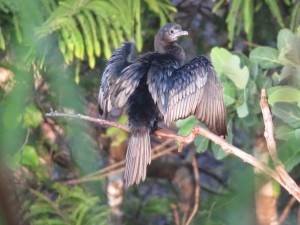
Little cormorant
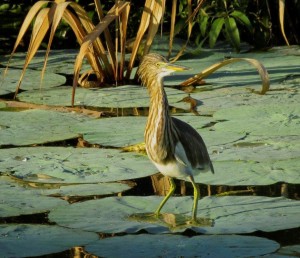
Indian Pond Heron
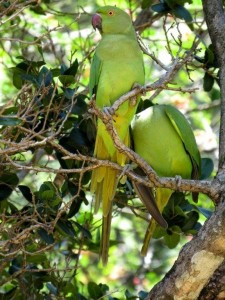
Layards Parakeet
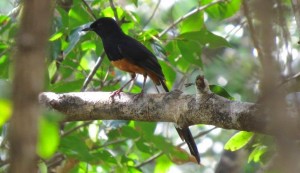
White-rumped sharma
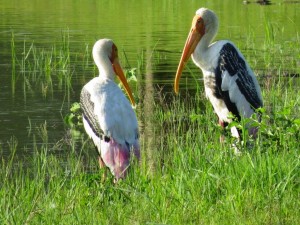
Painted Stork
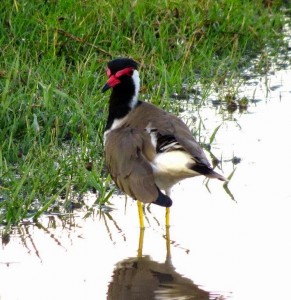
Red-wattled Lapwing
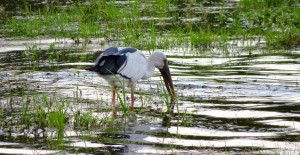
Asian Openbill
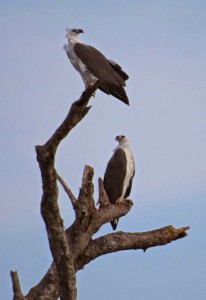
White-bellied sea eagle
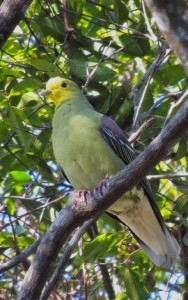
Sri Lanka Green Pigeon
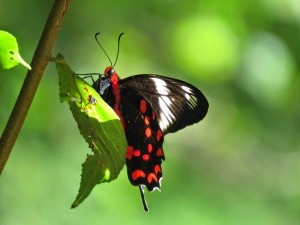
Crimson Rose
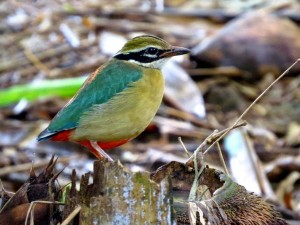
Indian Pitta
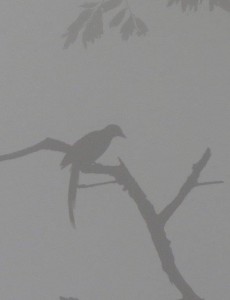
Blue Magpie at Hakgala Gardens Nuwara Eliya
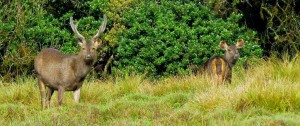
Sambar Deer
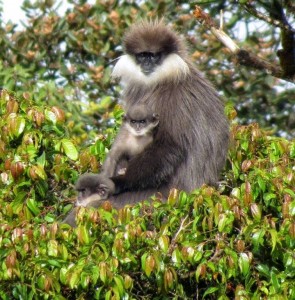
Purple-faced leaf monkey
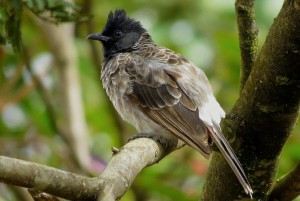
Red-vented Bulbul
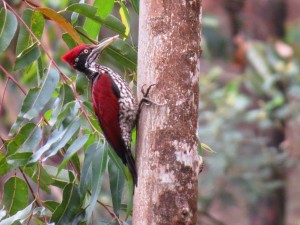
Greater flameback
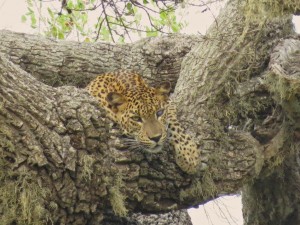
Leopard
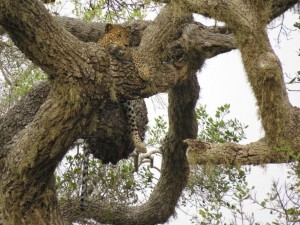
Leopard
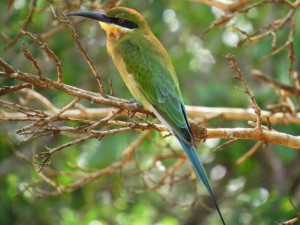
Blue-tailed bee-eater
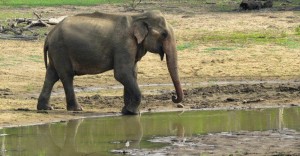
Asian Elephant
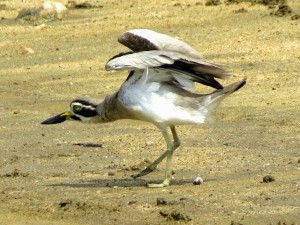
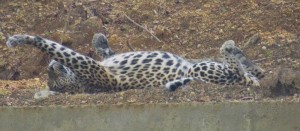
Leopard
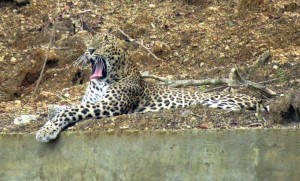
Leopard
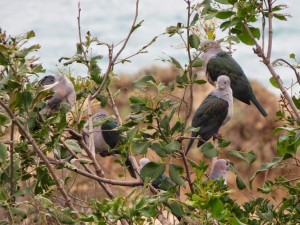
Green imperial pigeon
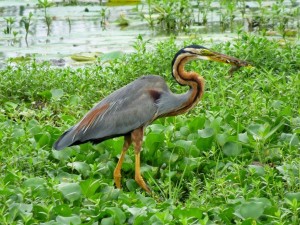
Purple Heron
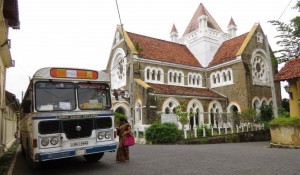
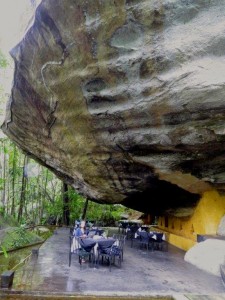
Boulder Garden, Sinharaja
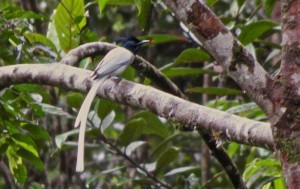
Paradise flycatcher
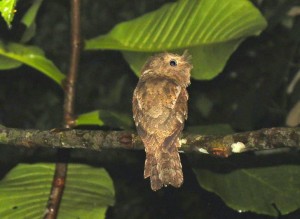
Ceylon Frogmouth
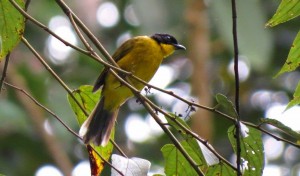
Black-capped Bulbul









